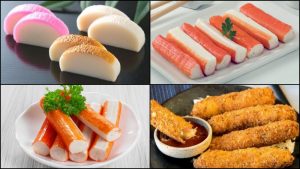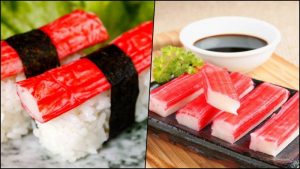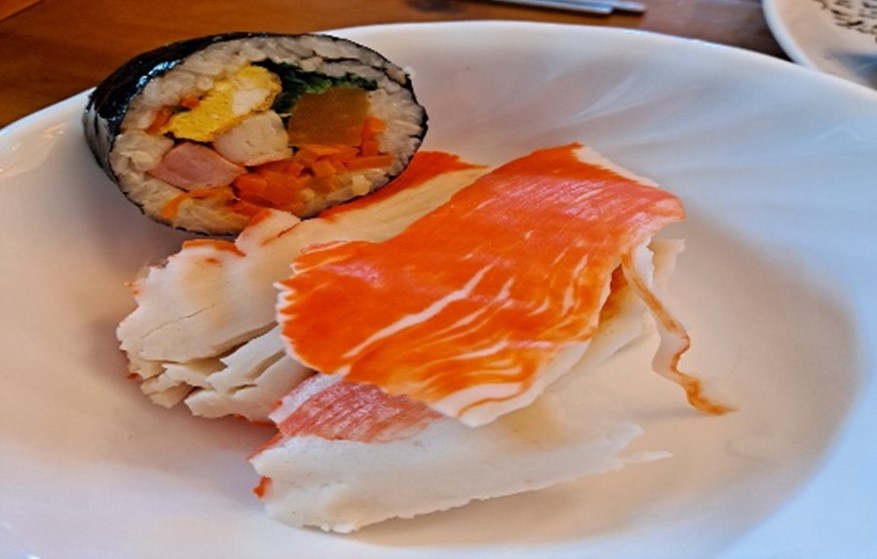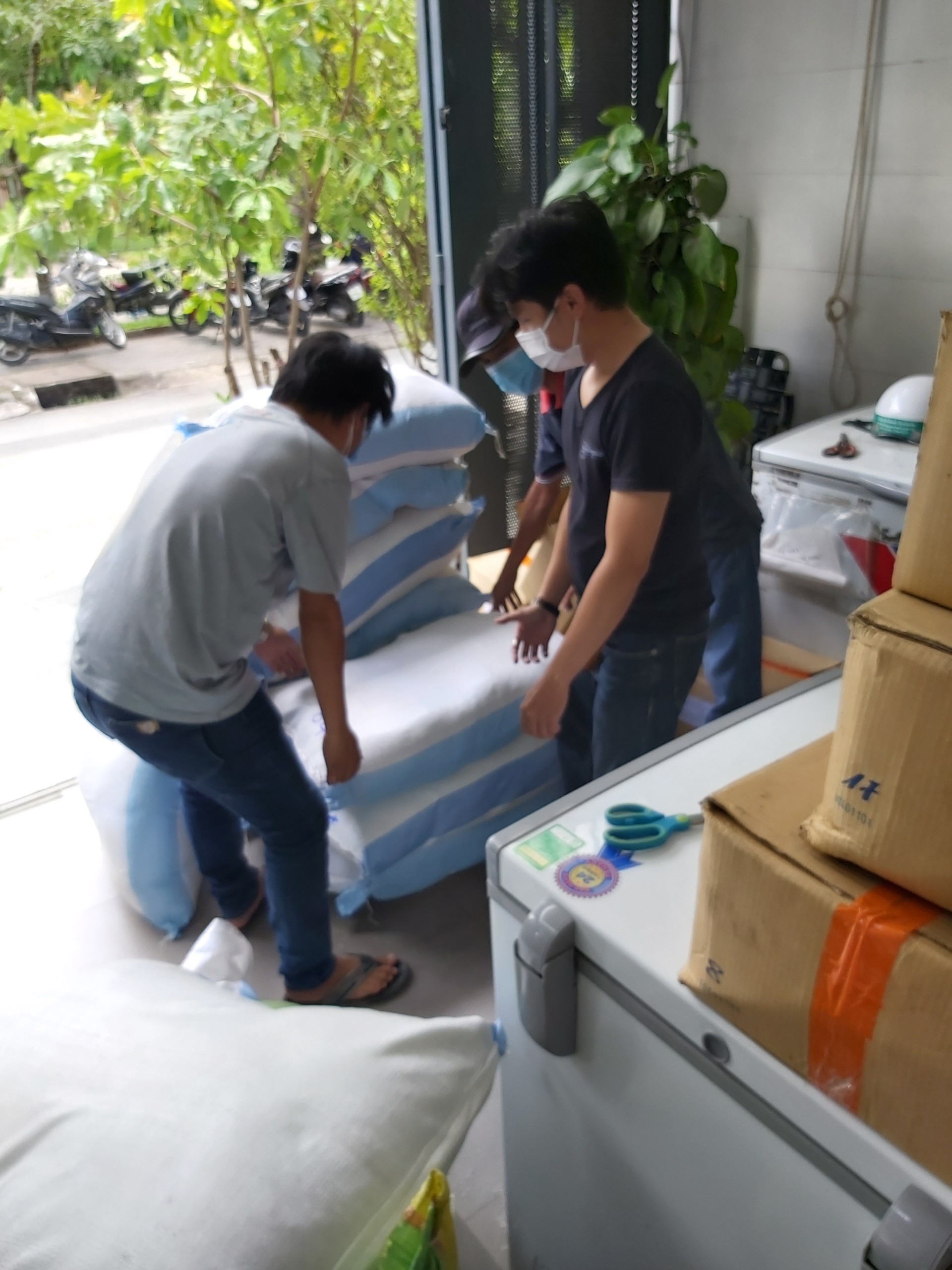
KAMABOKO, SURIMI and KANI-KAMA – What are they? Differences?
Have you heard of the names Kamaboko, Surimi and Kani-kama? These are different Japanese names used to refer to a very popular pressed fish meat in Japan that was also exported to the West. Today we will see what they are and what their differences are.

SURIMI – PRESSED FISH PASTE
Surimi [すり身] is a food made from meat or white fish paste. It can be found in shapes of sticks, cubes, rods, medallions, crumbs, shavings and cut generally in two colors, white with pink or reddish.
The production of surimi first occurs in the transformation of the fish into the base paste, and then modeling that base in the final product. Can be included monosodium glutamate, salt, flavorings, coloring, starch, egg white, oil and other ingredients.
This paste is usually molded in thin layers, which are rolled up, dyed with red dye, packed in vacuum plastic, baked in the packaging itself and cut inside the plastic in rods, then frozen (in the case of kani kama).
Surimi x Kamaboko – What’s the difference? Both are the same, the difference is that the Japanese word surimi it can also refer only to the fish paste and not to the fish cake in strips or other specific format as in the case of kamaboko.
Surimi not to be confused with tsumire [摘入] which are fish cakes, but with no added eggs or other ingredients.
KANI-KAMA – THE FAKE CRAB
My father always brought this guy kani-kama at home, I always ate thinking it was crab meat, but in childhood I never realized that it was just pressed meat and that sometimes it was just flavored with crab extract.
The word kani literally means crab and gave rise to the name of the product. In the 60s and 70s, the scarcity of crab meat led Japanese cooks to invent the kani-kamaboko, which quickly became popular worldwide.
In fact the goal of surimi is to imitate the taste and texture of fish such as crab, crab and lobster. In Brazil it is easy to find this Kani in large markets next to the cold. It is also a common ingredient in sushi Brazilians.
Kani kama is a protein-rich food, not as much as fish. It can be eaten raw, in salads, accompanied by soy sauce or eaten after boiling for some time, seasoned with lemon.

KAMABOKO – THE HISTORY OF SURIMI
O kamaboko [蒲鉾] is a type of traditional surimi that is still quite popular in Japan today. It is believed that kamaboko arose in the 17th century and was made by women of fishermen and their families. Heian era literature already talks about surimi.
The preparation consisted of washing the meat of the fish in fresh water, putting it to salt in order to prolong the conservation period and thus being able to maintain a stock of protein foods outside the fishing season.
The traditional handmade kamaboko is shaped like bread and then steamed to a firm consistency. The pink and white colors of kamaboko usually indicate luck.

As already mentioned, it can be found in variations such as Kani-kama, or even with artistic touches like the Narutomaki with pink spirals or even with a cheese flavor in the case of Chi-kama. In South Korea its variation is called eomuk or odeng.
This food is quite common in new year like Oshougatsu. It can also be purchased at convenience stores already packaged. Because it is made with fish paste, it is possible to make artistic drawings like the video below.
The Japanese Kamaboko Organization in 1983 stated that: November 15th is “Kamaboko Day”.
KAMABOKO, SURIMI AND KANI-KAMA RECIPE
Want to learn how to make your own Kamaboko? Why not take a look at the recipe below?
Ingredients
- 300 grams of white fish;
- 1 egg white;
- Salt and Ajinomoto;
Remove the skin and bones of the white fish and chop into small pieces. Soak in cold water and mix to remove any foam. Repeat twice.
Wrap the fish in muslin or cloth and drain the excess water. Grind everything in a food processor, you can use a pestle, do this repeatedly. Leave at room temperature for 1 hour. Make sure it has dried, you can use a dryer.
Steam in boiling water for 20 minutes over medium heat. When steamed, transfer to cold water and let cool. It won’t be perfect as an industrialized surimi, but it can taste good.
Source: skdesu.com
https://skdesu.com/en/kamaboko-surimi-kani-kama/















